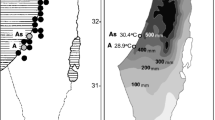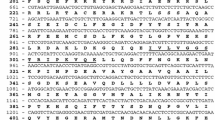Abstract
Heat shock proteins (HSPs) are synthesised under stressful conditions such as exposure to elevated temperatures, contamination, free radicals, UV light or pathophysiological states resulting from parasites and/or pathogens. HSPs function to protect cells by means of modulation of protein folding. In Antarctica, these proteins have been studied in such organisms as protozoa and fishes, without attention to geographical variation. We studied the variation of HSP70 and HSP60 levels in Gentoo, Adelie and Chinstrap penguins among different populations along the Antarctic Peninsula from King George Island (62°15′S) to Avian Island (67°46′S). Our results show that the northern population of Gentoo penguin showed higher levels of HSP70 and HSP60 than the southern population. High temperature, human impact and immunity as a proxy for parasites and diseases in northern locations could explain such variation. Adelie penguin only showed significant geographical variation in HSP70, increasing north to south, a pattern perhaps related to increased UV radiation and decreased temperatures from north to south. Chinstrap penguin shows no population differences in the variation in neither HSP70 nor HSP60, although HSP70 showed marginally significant differences. Sexual differences in the level of these proteins are also discussed.


Similar content being viewed by others
References
Barbosa A, Merino S, Benzal J, Martinez J, Garcia-Fraile S (2007) Geographic variation in immunoglobulin levels in pygoscelid penguins. Polar Biol 30:219–225
Bargagli R (2005) Antarctic ecosystems. Environmental contamination, climate change and human impact. Ecological studies, vol 175. Springer, Berlin
Bosch TCG, Krylow SM, Bode HR, Steele RE (1988) Thermotolerance and synthesis of heat shock proteins: these responses are present in Hydra attenuate but absent in Hydra oligactis. Proc Natl Acad Sci USA 85:7927–7931
Boutette JB, Ramsay EC, Potgieter LND, Kania SA (2002) An improved polymerase chain reaction-restriction fragment length polymorphism assay for gender identification in birds. J Avian Med Surg 16:198–202
Buckley AB, Place SP, Hofmann GE (2004) Regulation of heat shock genes in isolated hepatocytes from an Antarctic fish, Trematomus bernacchii. J Exp Biol 207:3649–3656
Carey HV, Sills NS, Gorham DA (1999) Stress proteins in mammalian hibernation. Am Zool 39:825–835
Carpenter CM, Hofmann GE (2000) Expression of 70kDa heat shock proteins in Antarctic and New Zealand notothenioid fishes. Comp Biochem Physiol Part A 125:229–238
Collins PL, Hightower LE (1982) Newcastle disease virus stimulate the celluar accumulation of stress (heat-shock) messengers-RNAs and proteins. J Virol 44:703–707
Ellegren H (1996) First gene on the avian W chromosome (CHD) provides a tag for universal sexing of non-ratite birds. Proc R Soc Lond B 263:1635–1641
Fader SC, Yu Z, Spotila JR (1994) Seasonal variation in heat shock proteins (HSP70) in stream fish under natural conditions. J Therm Biol 19:335–341
Gardner H, Kerry K, Riddle M, Brouwer S, Gleeson L (1997) Poultry virus infection in Antarctic penguins. Nature 387:245
Gauthier-Clerc M, Eterradossi N, Toquin D, Guittet M, Kuntz G, Le Maho Y (2002) Serological survey of the king penguin, Aptenodytes patagonicus, in Crozet Archipielago for antibodies to infectious bursal disease influenza A and Newcastle disease viruses. Polar Biol 25:316–319
Gregersen N, Bross P, Andressen BS, Pedersen CB, Corydon TJ, Bolund L (2001) The role of chaperon-assisted folding and quality control in inborn errors of metabolism: protein folding disorders. J Inherit Metab Dis 24:2819–2212
Hofman RJ, Jatko J (2001) Assessment of the possible accumulative environmental impacts of commercial ship-based tourism in the Antarctic Peninsula area (http://www.nsf.gov/pubs/2002/nsf02201/nsf02201.pdf)
Hofmann GE, Buckley BA, Airaksinen S, Keen JE, Somero GN (2000) Heat-shock protein expression is absent in the Antarctic fish Trematomus bernachii (Family: Nothoteniidae). J Exper Biol 203:2331–2339
Karentz D, Bosch I (2001) Influence of ozone-related increases in ultraviolet radiation on Antarctic marine organisms. Am Zool 41:3–16
Kerry K, Riddle M, Clarke K (1999) Diseases of Antarctic wildlife. A report for SCAR and COMNAP. SCAR
King JC, Turner J, Marshall GJ, Connolley WM, Lachlan-Cope TA (2003) Antarctic peninsula climate variability and its causes as revealed by analysis of instrumental records. AGU Antarct Res Ser 79:17–30
La Terza A, Papa G, Miceli C, Luporini P (2001) Divergence between two Antarctic species of ciliate Euplotes, E. focardii and E. nobilii, in the expression of heat-shock protein 70 genes. Mol Ecol 10:1061–1067
Linquist L (1986) The heat -shock response. Annu Rev Biochem 55:1151–1191
Madronich S, McKenzie RL, Caldwell MM, Bjorn LO (1994) Changes in ultraviolet radiation reaching the earth’s surface. In: UNEP (ed) Environmental effects of ozone depletion. UNEP, Nairobi, Kenya
Martinez J, Perez-Serrano J, Bernadina WE, Rodríguez-Caabeiro F (2001) Stress response to cold in Trichinella species. Cryobiology 43:293–302
Mateo R, Guitart R (2003) Heavy metals in livers of waterbirds from Spain. Arch Environ Contam Toxicol 44:398–404
Merino S, Martinez J, Barbosa A, Moller AP, de Lope F, Perez J, Rodríguez-Caabeiro F (1998) Increase in heat-shock protein from blood cells in response of nestlings house martins (Delichon urbica) to parasitism: an experimental approach. Oecologia 116:343–347
Merino S, Martínez J, Moller AP, Barbosa A, de Lope F, Rodríguez-Caabeiro F (2002) Blood stress protein levels in relation to sex and parasitism of barn swallows (Hirundo rustica). Ecoscience 9:300–305
Morales J, Moreno J, Merino S, Tomás G, Martínez J, Garamszegi LZ (2004) Association between immune parameters and stress in breeding pied flycatcher (Ficedula hypoleuca) females. Can J Zool 82:1484–1492
Moreno J, Merino S, Martínez J, Sanz JJ, Arriero E (2002) Heterophil/lymphocyte ratios and heat-shock protein levels are related to growth in nestling birds. Ecoscience 9:434–439
Morimoto RI (1991) Heat shock: the role of transient inducible responses in cell damage, transformation and differentiation. Cancer Cells 3:295–301
Parsell DA, Lindquist S (1993) The function of heat shock proteins in stress tolerance: degradation and reactivation of damaged proteins. Annu Rev Gent 27:437–496
Place SP, Hofmann GE (2005) Constitutive expression of a stress-inducible heat shock protein gene, HSP70, in phylogenetically distant Antarctic fish. Polar Biol 28:261–267
Ritossa F (1962) A new puffing pattern induced by temperature shock and DNP in Drosophila. Experientia 18:571–573
Sanders BM, Hope C, Pascoe VM, Martin LS (1991) Characterization of the stress protein response in two species of Collisell limpets with different temperature tolerances. Physiol Zool 64:1471–1489
Schlesinger MJ (1990) Heat shock proteins. J Biol Chem 235:12111–12114
Shindell DT, Grewe V (2002) Separating the influence of halogens and climate changes on ozone recovery in the upper stratosphere. J Geophys Res Atmos 107:4144. doi:10.1029/2001JD000420
Sonna LA, Fujita J, Gaffin SL, Lilly CM (2002) Invited review: effects of heat and cold stress on mammalian gene expression. J Appl Physiol 92:1725–1742
Sorensen JG, Kristensen TN, Loeschcke V (2003) The evolutionary and ecological role of heat shock proteins. Ecol Lett 6:1025–1037
Sutherst RW (2001) The vulnerability of animal and human health to parasites under global change. Int J Parasitol 31:933–948
Taggart MA, Figuerola J, Green AJ, Mateo R, Deacon C, Osborn D, Meharg AA (2006) After the aznalcollar mine spill: arsenic, zinc, selenium, lead and copper levels in livers and bones of five waterfowl species. Environ Res 100:349–361
Trautinger F, KindasMugge I, Knobler RM, Honigsmann H (1996) Stress protein in the cellular response to ultraviolet radiation. J Photochem Photobiol B Biol 35:141–148
Turner J, Colwell SR, Marshall GJ, Lachlan-Cope TA, Carleton AM, Jones PD, Lagun V, Reid PA, Iagovkina S (2004) The SCAR READER project: toward a high-quality database of mean Antarctic meteorological observations. J Clim 17:2890–2898
Vayda ME, Yuan ML (1994) The heat shock response in an antarctic alga is evident a 5°C. Plant Mol Biol 24:229–233
Werner I, Nagel R (1997) Stress protein HSP60 and HSP70 in three species of amphipods exposed to cadmium, diazinon, dieldrin and flouranthene. Environ Toxicol Chem 16:2393–2403
Williams TD (1995) The penguins. Oxford University Press, Oxford
Zuk M, McKean KA (1996) Sex differences in parasite infections: patterns and processes. Int J Parasitol 26:1009–1024
Acknowledgements
This study has been funded by the Acción Especial project REN2001-5004/ANT of the Spanish Ministry of Education and Science. The projects CGL2004-01348/ANT (PINGUCLIM) and POL2006-05175 (BIRDHEALTH-SPAIN) supported AB while the paper was written. We very much appreciate the hospitality and logistic support of the Spanish Antarctic Bases “Juan Carlos I”, “Gabriel de Castilla” and the Spanish Polar Ships Hesperides and Las Palmas. We thank Elena Arriero and Rafa Barrientos for laboratory assistance with molecular sexing. We also thank the suggestions made by two anonymous referees that improved very much early versions of the manuscript.
Author information
Authors and Affiliations
Corresponding author
Rights and permissions
About this article
Cite this article
Barbosa, A., Merino, S., Benzal, J. et al. Population variability in heat shock proteins among three Antarctic penguin species. Polar Biol 30, 1239–1244 (2007). https://doi.org/10.1007/s00300-007-0284-0
Received:
Revised:
Accepted:
Published:
Issue Date:
DOI: https://doi.org/10.1007/s00300-007-0284-0




